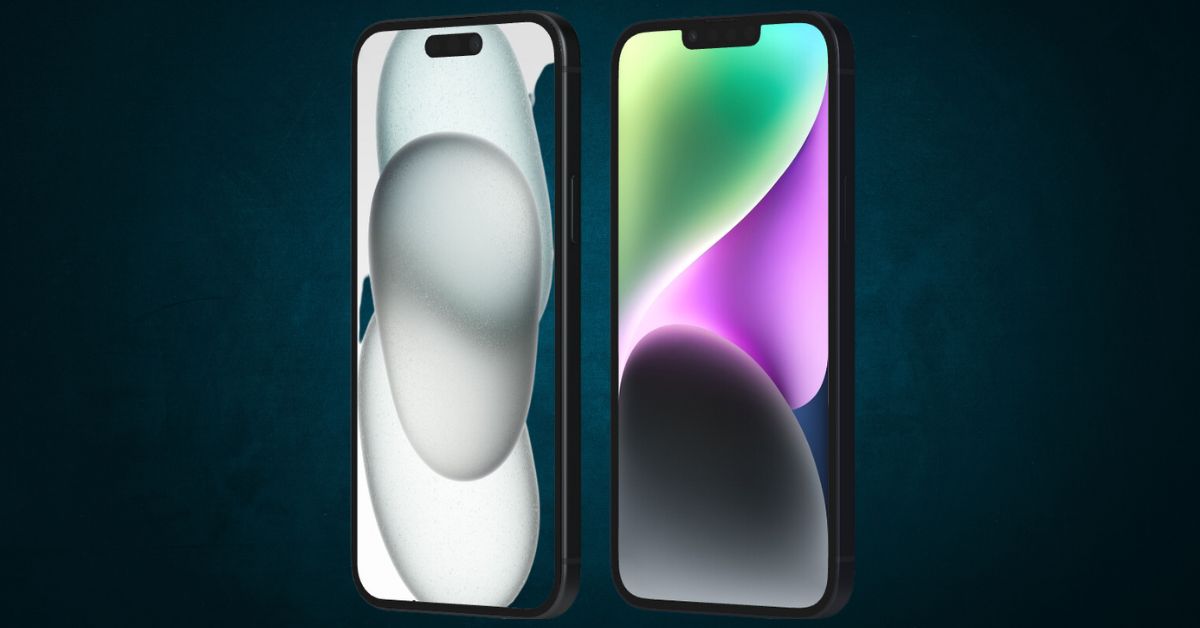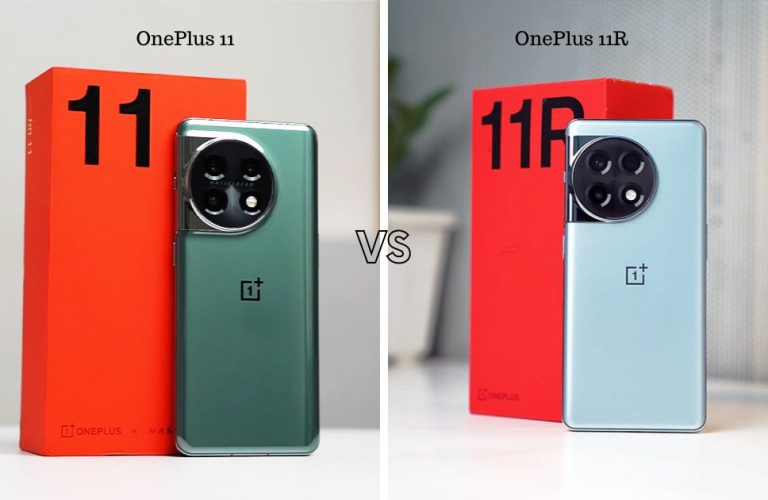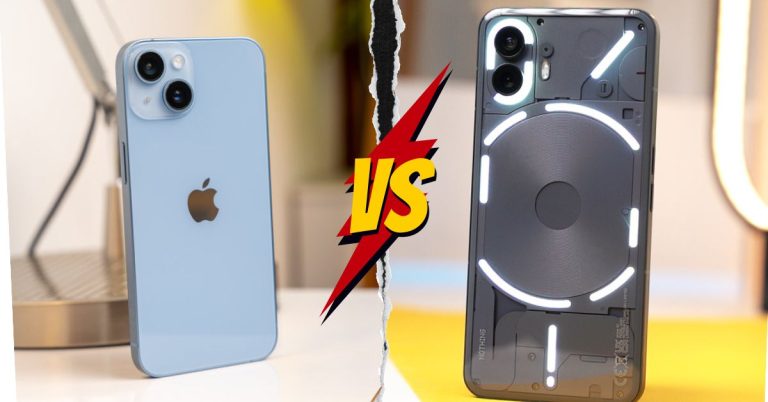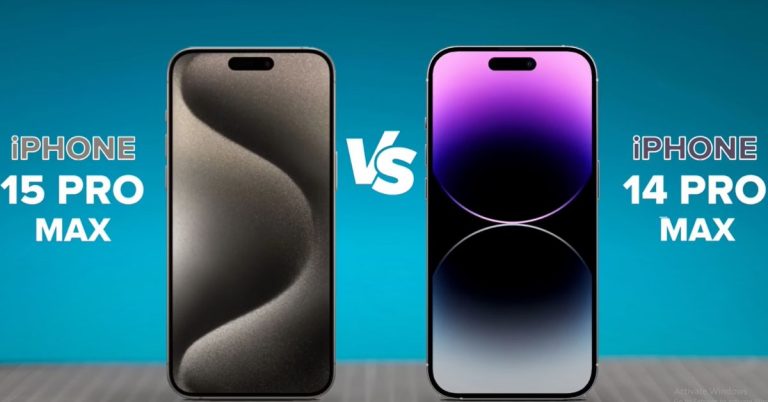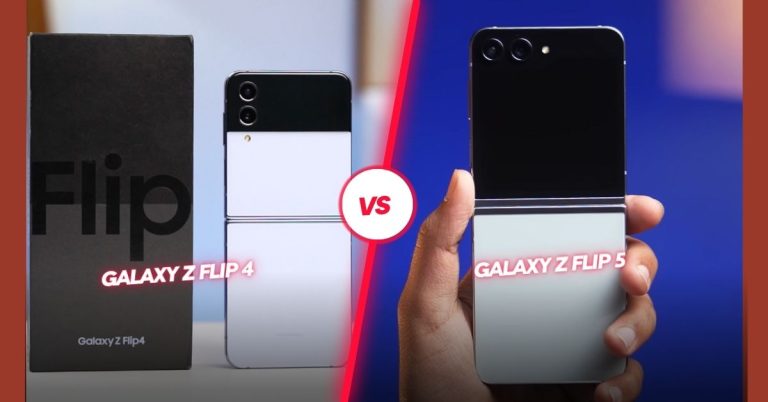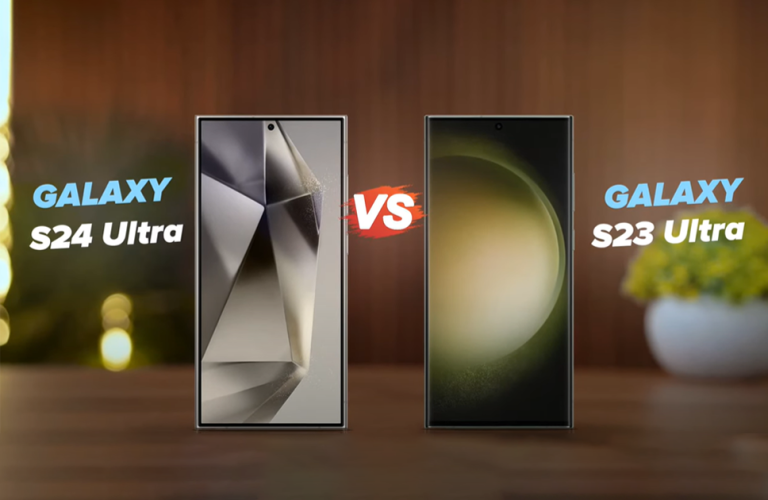iPhone 15 vs iPhone 14: Noticeable Upgrades!
In September 2023, Apple unveiled its latest iPhone lineup, creating a buzz among Apple enthusiasts with the introduction of the impressive Pro models. Alongside these Pro models, Apple also introduced the base model, the iPhone 15.
At first glance, it may seem that not much has changed between the iPhone 14 and the new iPhone 15, with their strikingly similar appearances. However, in today’s exploration, let’s dive into a comprehensive comparison between these two rivals, unraveling the core differences that Apple has crafted in 2023.
We will closely examine areas such as design, display, performance, and more to uncover the subtle but potentially significant enhancements that may sway your decision when choosing between the iPhone 15 and its predecessor, the iPhone 14. Stay tuned as we dissect these two remarkable smartphones to help you make an informed choice.
Table of Contents
2. iPhone 15 vs iPhone 14: Key Differences
| iPhone 14 | iPhone 15 |
|
|
|
|
|
|
|
|
|
|
Check Latest price of iPhone 15 vs iPhone 14
3. iPhone 15 vs iPhone 14: Design
The design and build of the iPhone 15 and iPhone 14 exhibit a strong family resemblance, with subtle differentiators that set them apart. The iPhone 14 boasts a familiar flat-edged design, featuring an aluminum frame and a glass back. Weighing in at a svelte 172 grams, it’s a lightweight device that comfortably fits in one hand.

Its IP68 water resistance rating allows it to withstand submersion in up to 6 meters of water for 30 minutes. The dual-lens camera cutout on the back remains unchanged, as does the lightning port and speaker at the bottom. Unfortunately, the iPhone 14 retains the notch introduced in previous iterations.
Conversely, the iPhone 15 maintains a similar flat-edged and boxy design reminiscent of the iPhone 14. The camera lens positioning on the back remains consistent.
However, the standout design feature is the “Dynamic Island” display, which replaces the notch, providing a sleeker and more immersive experience. While the base model iPhone 15 is marginally taller at 147.6mm and slightly lighter at 171 grams, these differences are hardly noticeable.
A noteworthy change on the iPhone 15 is the adoption of a Type-C port, in response to pressure from the European Union to reduce electronic waste and provide a more versatile connectivity option.
This alteration marks a departure from the lightning port seen on the iPhone 14. In summary, the iPhone 15 and iPhone 14 share an unmistakable design lineage, with the iPhone 15 offering subtle improvements, notably in the form of the “Dynamic Island” display and the transition to a Type-C port.
4. iPhone 15 vs iPhone 14: Display
When comparing the displays of the iPhone 15 and iPhone 14, it’s evident that Apple has made some noteworthy enhancements, albeit with certain similarities. Both models feature a 6.1-inch screen, providing ample real estate for various tasks.

However, the most striking difference is the introduction of the “Dynamic Island” display on the iPhone 15, which replaces the notch seen on the iPhone 14.
In terms of resolution, both phones offer a commendable 1170×2532 pixels, resulting in a pixel density of around 460 pixels per inch (PPI). This ensures crisp and vibrant visuals, making them ideal for watching HDR10 content with Dolby Vision support. Movies and series continue to look impressive on both devices.
One significant improvement in the iPhone 15’s display is its outdoor visibility, thanks to a remarkable peak brightness of 2000 nits. This extra brightness enhances visibility in bright sunlight and improves overall display quality.
However, it’s worth noting that both models still maintain a 60Hz refresh rate, so if you desire a higher refresh rate, you’ll need to consider the Pro models.
So, what new major changes this year on the iPhone 15 compared to the iPhone 14?, the iPhone 15’s “Dynamic Island” display and increased peak brightness make it the superior choice for those who prioritize outdoor visibility and a notch-free design, despite the shared high-quality visuals and HDR capabilities with the iPhone 14.
5. iPhone 15 vs iPhone 14: Camera
A good camera is least expected for a newer device, the iPhone 15 introduces significant enhancements over its predecessor, the iPhone 14. And the differences are not just by megapixels but also by new features like the portrait mode.
The iPhone 14 featured a dual back camera setup, which delivered good-quality photos. The 12MP main camera with an f/1.5 aperture and sensor-shift optical image stabilization (OIS) was particularly effective for portrait mode, although users had to manually switch modes when shifting from normal to portrait photography.

The 12MP ultra-wide lens offered a 120-degree field of view, producing impressive wide-angle shots. Selfie enthusiasts enjoyed a 12MP front camera with an f/1.9 aperture, ensuring high-quality selfies. Both front and rear cameras supported 60fps 4K recording and 120fps 1080p video recording, ideal for vlogging.
In contrast, the iPhone 15 brings a substantial upgrade with its 48MP main camera sporting an f/1.6 aperture. This results in sharper and more vibrant photos. Moreover, the introduction of depth sensing and focal length features eliminates the need to manually switch to portrait mode, streamlining the photography process.

The 12MP ultra-wide lens with a 120-degree field of view remains consistent but benefits from the upgraded chipset, resulting in sharper images with improved dynamic range. The front camera maintains its 12MP resolution and 4K recording capabilities, with no major upgrades compared to the iPhone 14.
6. iPhone 15 vs iPhone 14: Performance
When it comes to performance, both the iPhone 15 and iPhone 14 offer impressive capabilities, but there are notable differences that set them apart.
The iPhone 14 is powered by the A15 Bionic chip, a 5-nanometer processor that delivers robust performance. With 6GB of RAM and up to 512GB of NVMe storage, it offers a smooth and responsive user experience.
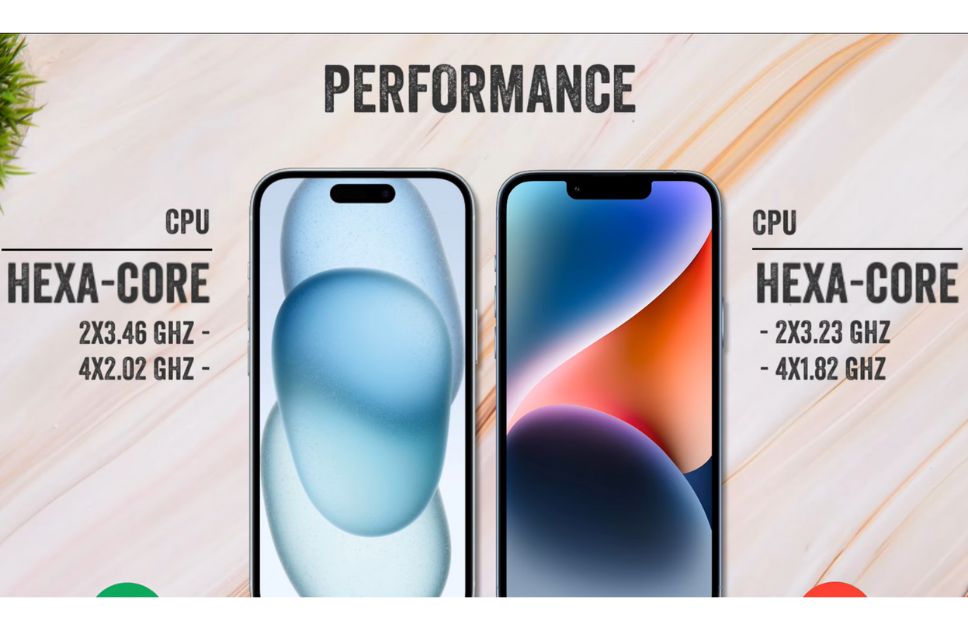
The 6-core CPU, comprising 2 performance and 4 efficiency cores, ensures smooth multitasking and gaming. Popular games like PUBG MOBILE and FORTNITE run without lag, providing crisp visuals. The device also supports Dolby Atmos and Dolby Vision for an immersive movie-watching experience.
In contrast, the iPhone 15 Pro is equipped with the A16 Bionic chip, a 4-nanometer chipset that represents a subtle yet meaningful performance upgrade over the iPhone 14.
It features 2 performance cores with a clock speed of 3.46GHz and 4 efficiency cores at 2.02GHz. This 7% improvement in performance cores is not a huge deal but still better compared to the iPhone 14, it ensures a more responsive interface and smoother gameplay.
The 5-core Apple GPU delivers enhanced graphics performance, resulting in better frame rates and sharper shadows in demanding games like PUBG: NEW STATE and GENSHIN IMPACT. Both models continue to support Dolby Atmos and Dolby Vision for an exceptional multimedia experience.
Additionally, the iPhone 15 introduces “Ultra Wideband 2” for improved location tracking and a faster “Find My” feature, an upgrade from the standard Ultra Wideband on the iPhone 14.
7. iPhone 15 vs iPhone 14: OS
In terms of the operating system, both the iPhone 15 and iPhone 14 come with distinct OS versions, each offering a unique set of features right out of the box.
The iPhone 14 runs on iOS 16, which introduces several customization options for users. With iOS 16, you can personalize your lock screen with your favorite photos, apply filters, add widgets, and even change the font of the date and time.

The introduction of “Focus” allows you to tailor your lock screen to match your specific usage needs, enhancing overall productivity. Widgets and Live Activities keep you updated on information from your favorite apps in real-time, while notifications are conveniently displayed at the bottom of the lock screen, offering different viewing options. iOS 16 also lets you create multiple lock screens, making it a more personalized experience.
On the other hand, the iPhone 15 comes with the newly launched iOS 17, which builds on the customization theme. iOS 17 allows users to personalize phone calls, create live stickers from their own photos, enhance FaceTime with video and audio message recording, and introduce a new full-screen experience when the phone is turned on its side while charging.
Additionally, iOS 17 offers improved AirDrop functionality for sharing contact information effortlessly.
Both OS versions offer unique features that cater to different user preferences, making the choice between the iPhone 15 and iPhone 14 a matter of which set of customization options aligns better with your needs.
8. iPhone 15 vs iPhone 14: Battery
When it comes to battery performance, the iPhone 15 and iPhone 14 exhibit subtle differences, with notable changes in the charging department.
The iPhone 14 base model is equipped with a 3279mAh battery, which, considering its size and efficient chipset, provides commendable performance. It boasts up to 20 hours of video playback, 16 hours of streaming, and an impressive 80 hours of audio playback.

Charging the device with the included 20W lightning port takes approximately 1 hour and 15 minutes to reach a full charge. Additional charging options include MagSafe at 15W and Qi Wireless at 7.5W, with the latter being the slowest.
In comparison, the iPhone 15 features a slightly larger 3349mAh battery, a modest 2% increase over its predecessor. However, this incremental change doesn’t translate into noticeable improvements in usage times. The device still delivers up to 20 hours of video playback, 16 hours of streaming, and 80 hours of audio playback.
Thankfully, the new Type-C charging port replaces the older lightning, a pressure for EU & this change offers versatility to other Apple devices like Macbook or iPad but retains the same 20W wired charging speed.
Although Apple suggests higher wattage charging is possible, a high-watt cable is not included in the box. Nevertheless, the included durable cloth-braided cable offers improved durability over previous plastic cables which broke more frequently. MagSafe and Qi Wireless charging capabilities remain consistent at 15W and 7.5W, respectively.
9. Overall Specs
Here is a more specified overview of the iPhone 15 against the iPhone 14’s technical specs-
| Specs | iPhone 14 | iPhone 15 |
| Display | Super Retina XDR display, 6.1‑inch OLED display, 1170 x 2532 resolution (460ppi), 1200 nits peak (86.0% screen-to-body ratio) | 6.1‑inch Super Retina XDR OLED, HDR10, Dolby Vision, (86.4% screen-to-body ratio), 1170×2556 resolution (461ppi), 2,000 nits peak |
| Protection | Glass front (Corning-made glass), glass back (Corning-made glass), stainless steel frame WaterProof: IP68 (6 meters for 30 Min) |
Aluminum design
Ceramic Shield front Color-infused glass back WaterProof: IP68 (6meters for 30Min) |
| Camera | Main: 12 MP, f/1.5, sensor-shift OIS
12 MP, f/2.4 Ultra-Wide, f/2.2, Ultrawide Video: 4K@24,25,30,60fps |
Main: 48 MP Main, f/1.6 Focus and Depth Control (Automatic Portrait) 12 MP Ultrawide, f/2.4,120° Video: 4K@24,30,60fps, Dolby Vision HDR Front: 12MP f/1.9, PDAF, SL 3D (biometric sensor, depth)Video: 4K@24/25/30/60fps, 1080p@30/60/120fps, gyro-EIS, HDR , Cinematic (4K 30fps) |
| Platform | OS: iOS 16, upgradable to iOS 16.4.1 & iOS 17
CPU: A15 Bionic (4nm) (2×3.23 GHz Avalanche + 4×1.82 GHz Blizzard) GPU: Apple GPU (5-core graphics) |
OS: iOS 17
CPU: A16 Bionic (4nm) (2×3.46 GHz Everest + 4×2.02 GHz Sawtooth), (6-Core CPU) GPU: Apple GPU (5-core graphics) |
| RAM | 6GB | 6GB |
| ROM | 128GB, 256GB, 512GB
Technology: NVMe |
128GB, 256GB, 512GB
Technology: NVme |
| Battery | 3279 mAh, 20W Wired, 15W Magsafe, 7.5 Qi Wireless Lightning, USB Lightning 2.0 |
Li-Ion 3349 mAh, 20W Wired (& Higher), 15W Magsafe, Qi Wireless 7.5W USB Type-C 2.0, DisplayPort |
| Audio | Dolby Atmos, Spatial Audio, Built‑in stereo speaker | Dolby Atmos, Spatial Audio, Built‑in stereo speaker |
| Connectivity | 5G, LTE, Bluetooth 5.3
WLAN: Wi-Fi 802.11, dual-band, hotspot |
5G, LTE, Bluetooth 5.3, USB-C 2.0
WLAN: Wi-Fi 802.11, dual-band, hotspot |
| Colors | Midnight, Purple, Starlight, Blue, Red, Yellow | Black, Blue, Green, Yellow, Pink |
10. Verdict
In conclusion, the iPhone 15 and iPhone 14 offer distinct advantages, catering to different user preferences and needs. The iPhone 15 stands out with significant upgrades in terms of battery life, display quality, and overall performance compared to its predecessor, the iPhone 14. If you value cutting-edge technology and demand a device with the latest chipset and a brighter display, the iPhone 15 is a clear choice.
On the other hand, the iPhone 14 is an excellent option for those who prioritize budget-conscious decisions. It provides solid performance, a good camera, and the reliability of Apple’s bionic chipset, all at a more affordable price point. For individuals looking to balance performance and cost-effectiveness, the iPhone 14 remains a compelling choice.
Ultimately, the decision between the iPhone 15 and iPhone 14 comes down to your specific requirements and budget constraints. Both devices offer impressive features, ensuring that there’s a suitable iPhone for every user.
Get the iPhone 14, if:
> You want the physical button;
> You need the most compact iPhone from last year;
> You require a good battery life on an iPhone.
[maxbutton id=”1″ url=”https://www.applegadgetsbd.com/product/iphone-14″ text=”Check Latest Price” ]
Get the iPhone 15, if:
> You want a new iPhone with a better battery;
> You need a brighter display on an iPhone;
> You require the power of an A16 bionic chip.
[maxbutton id=”1″ url=”https://www.applegadgetsbd.com/product/iphone-15″ text=”Check Latest Price” ]

Mohammad Shariful Islam is the CEO and MD of Apple Gadgets, a leading e-commerce and retail chain for gadgets in Bangladesh. He has a passion for technology, entrepreneurship, and holds a decade of experience in gadget E-Commerce. He’s committed to providing the best possible shopping experience for customers by delivering the latest and trendy gadgets.

